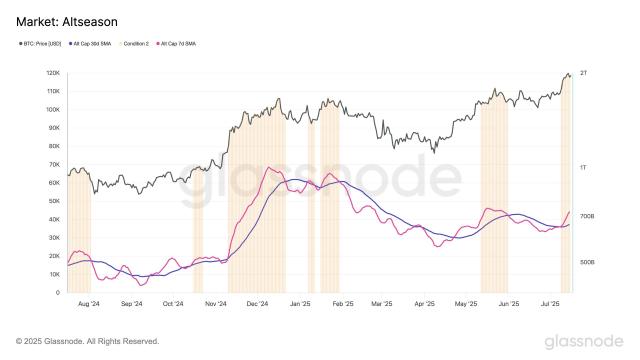Original | Odaily (Odaily Planet News) (@OdailyChina)
Author | Azuma (@azuma_eth)

Synthetix's stablecoin sUSD has recently attracted market attention due to prolonged depegging.
Since showing initial signs of depegging on March 20, sUSD's deviation has continued to expand, dropping below $0.7 at one point and currently reporting at $0.78. As Synthetix gradually introduces various error correction measures, sUSD seems to have somewhat stabilized at its low point, though whether it can re-peg remains a complex issue.

Brief Analysis of Depegging Causes
The sUSD depegging needs to be explained starting from Synthetix's positioning shift and protocol changes.
Synthetix's original positioning was a synthetic assets (Synths) protocol, allowing users to mint synthetic assets tracking different asset performances (such as BTC, ETH) through over-collateralization, and sUSD is now the only synthetic asset with relatively broad utility, as Synthetix has gradually abandoned its original synthetic asset model, shifting towards a perpetual contract DEX.
Previously, Synthetix users needed to pledge SNX with a 750% collateralization ratio - meaning for every $7.5 of SNX pledged, 1 sUSD could be minted. The synthetic asset minting mechanism is similar to lending markets, where collateral is locked, and synthetic assets become debt-generating loans. sUSD debt is denominated in USD, while synthetic assets like Bitcoin have debt denominated in Bitcoin, fluctuating with token prices. SNX pledgers need to bear the corresponding proportion of global debt in the system, requiring Synthetix to design complex hedging strategies to avoid risks from price fluctuations. This hedging demand, extremely high collateralization ratio, and system complexity have made SNX pledgers lose interest, so Synthetix recently introduced a new model through the SIP-420 proposal.
In early 2025, SIP-420, aimed at simplifying sUSD minting and improving efficiency, was approved by governance. SIP-420 introduced a shared debt pool mechanism, planning to gradually transition sUSD minting from individual collateralization to a collective fund pool over 12 months. SNX stakers no longer need to individually mint sUSD and bear personal debt, but can delegate funds to a public pool, achieving a structure without liquidation and personal debt. Simultaneously, SIP-420 reduced the sUSD collateralization ratio from 750% to 200% to significantly improve system capital efficiency.
However, with personal debt exemption,when sUSD price deviates from its anchor value, SNX stakers no longer have the motivation to repurchase sUSD at low prices to repay debt (previously, individual pledgers could buy sUSD at a discount to repay debt and stabilize the price), causing the protocol's original self-anchoring adjustment mechanism to fail.This is the fundamental reason for sUSD's depegging.
The depegging situation has gradually worsened because sUSD liquidity is not as abundant as imagined. Taking the largest pool on Curve (sUSD/USDC/DAI/USDT) as an example, out of the total liquidity of about $11.51 million, sUSD pool share is approximately 81.7% - meaning actual exit liquidity has been largely consumed during the depegging process.

Synthetix's Response Plan
On April 2, Synthetix founder Kain first responded to sUSD's depegging. Kain mentioned that the depegging occurred because the primary driver for purchasing sUSD (debt management) has been eliminated, and the new mechanism is in transition, thus causing a temporary depegging.

As mentioned earlier, SIP-420 hopes to complete the mechanism transition in 12 months, but the community obviously cannot wait with a depegged stablecoin for 12 months. Therefore, Synthetix has recently introduced multiple additional measures to try to repair sUSD's price. The key word for these measures is "incentive".
The first measure is to provide liquidity incentives for sUSD, with the latest incentive measure offering up to 49.18% yield for staking sUSD/sUSDe LP on Convex;
The second measure is to provide incentives for sUSD deposits through Infinex, another project developed by the same team, with incentives lasting six weeks, distributing 16,000 OP rewards weekly to users depositing over 1000 sUSD;
The third measure is the latest proposal, allowing users to stake sUSD in the 420 pool, with a one-year lock-up period, but offering 5 million SNX as incentive.
Clearly, these three measures aim to address the "insufficient sUSD purchase demand" mentioned by Kain. By providing additional incentives for some lock-up behaviors, Synthetix hopes to stimulate sUSD purchase demand and limit potential selling pressure, thereby gradually pushing the stablecoin's price back to its peg.
Especially for the third measure with stricter conditions and greater incentive intensity, Kain also mentioned his expectations in a recent post, emphasizing that the problem can be completely solved, and the team will gradually resolve the depegging issue by optimizing the incentive mechanism.
It's worth noting that Kain also mentioned potentially wielding a "big stick" against SNX stakers who do not adopt the new staking mechanism to help resolve the sUSD depegging - possibly suggesting that after multiple incentive measures, they may next apply pressure through punitive conditions for users who do not "cooperate" with the repair efforts.

Since Synthetix has not yet provided a user interface for sUSD staking, staking operations currently require manual processing by the team, so it's currently impossible to know how many users will participate in sUSD staking under these incentives, which will significantly impact the repair effect.
Based on the current situation, it's difficult to determine whether Synthetix can stabilize the situation. Although there are already some voices suggesting to "buy the dips", it is not recommended to "fish in troubled waters" at present. If one cannot resist the discount temptation, they should closely monitor SNX's price performance - to prevent a potential "price drop, insufficient collateral, discount amplification, panic selling" death spiral.
Alternative Arbitrage Opportunity
Compared to betting on re-pegging, the market seems to be presenting another arbitrage opportunity - the prediction market.
Prediction market Truemarket has launched a prediction pool about whether sUSD will re-peg before July, with the current Yes share priced at $0.55 and No share priced at $0.45.

Since sUSD is currently priced at $0.78, re-pegging would restore each sUSD unit to $1, and each Yes share would also increase from $0.55 to $1, this price difference provides some arbitrage space.
However, the depth of Truemarket's prediction pool is relatively small and cannot handle large-scale transactions, so the actual operational space for this strategy is limited - it is recommended to follow up on whether other more mainstream prediction markets like Polymarket will open similar prediction pools and explore potential arbitrage opportunities.








